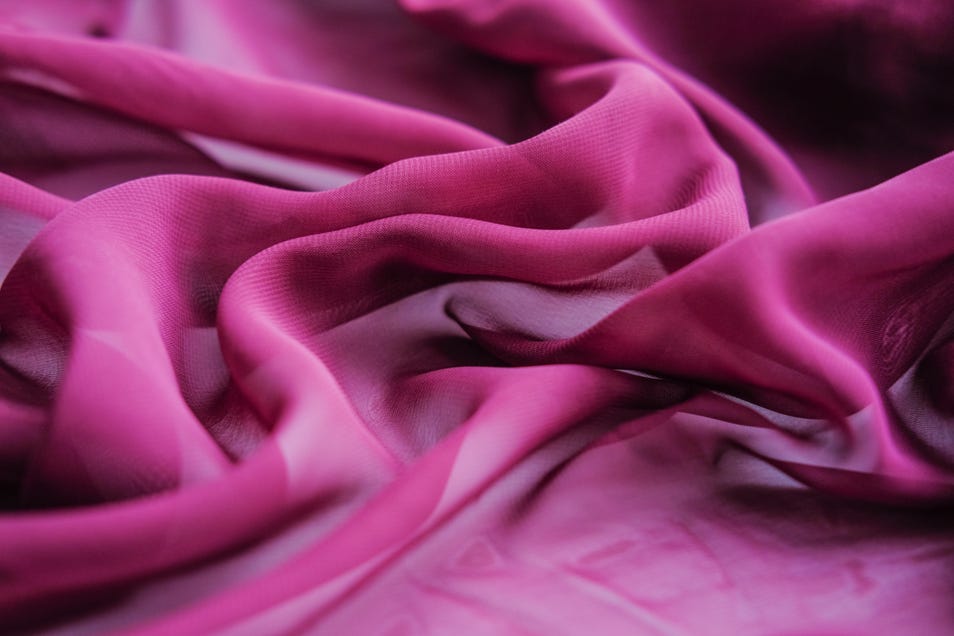Organza may be delicate, but it doesn’t have to be high maintenance. Whether it’s draped as a saree, styled into a gown, or used as a decorative piece, its luxurious fabric is often saved for special occasions. Unfortunately, that also makes it more prone to visible stains like makeup, food, oil, or dust, and knowing what kind of stain you’re dealing with helps you clean it right.
If you’ve ever struggled to remove stains from organza or feared washing it altogether, this guide is here to help. With the right techniques, you can safely wash organza without damage and keep it looking as flawless as the day you bought it.
Why Organza Needs Extra Care
Organza is often made from silk, polyester, or nylon, each requiring gentle handling. Its semi-transparent nature means stains show up easily, and its weave is so fine that even minor friction can cause wear and tear.
If you spill makeup, food, or oil on organza, it's important to act quickly. This delicate fabric can easily show stains and get damaged. To remove stains from organza without harming it, use gentle cleaning methods. Avoid scrubbing or using strong chemicals, as they can ruin the fabric. Instead, treat the stain carefully to keep your organza looking beautiful.
To wash organza without damage, it's advisable to:
- Hand wash: Immerse the garment in cold water mixed with a mild detergent. Gently agitate without wringing or twisting. This will remove grease from the organza.
- Rinse thoroughly: Ensure all detergent residues are removed by rinsing with cold water.
- Dry carefully: Lay the organza flat on a clean towel, rolling it gently to absorb excess water, then air dry away from direct sunlight.
Types of Common Stains on Organza
Delicate as it is, organza isn't immune to everyday mishaps. From hurried makeup touches to accidental food drips, this elegant fabric can pick up a variety of stains. Knowing what kind of stain you're facing helps you choose the right cleaning method and saves your organza from unnecessary damage.
- Grease or Oil-Based Stains: These stains often result from accidental contact with oily foods or natural skin oils. Due to organza's fine weave, such stains can quickly penetrate the fabric, making them challenging to remove if not addressed quickly.
- Makeup Stains: Commonly found around necklines or sleeves, makeup stains can include foundation, lipstick, or powder. These products often contain oils and pigments that can adhere strongly to organza fibers.
- Dirt and Dust: Especially prevalent on hems or longer flowing areas, dirt and dust can accumulate from regular wear. To clean organza at home, gently shake out the garment and use a soft brush or cloth to remove surface particles before any washing.
- Sweat Marks: Particularly under the arms or along the back, sweat can leave noticeable marks on organza. These stains can affect the fabric's appearance.
Step-by-Step Guide: Washing Organza Safely
You don’t have to send every organza outfit to the dry cleaner. With care, you can clean organza at home effectively. Here are some home remedies for cleaning organza:
1. Spot Treat Stains First: Before submerging the fabric, it’s important to spot-clean areas that need extra attention. To remove stains from organza, follow these steps:
- Blot, Don’t Rub: Use a soft cloth or cotton pad to blot the stain gently.
- Cold Water First: Always start with cold water to prevent setting the stain.
- Avoid Vigorous Scrubbing: It can weaken the weave and cause fraying.
2. Hand Wash with Care: If you’re wondering how to wash organza without harming it, here's how to do it:
- Fill a basin with lukewarm water.
- Add a small amount of gentle detergent, ideally one meant for delicates or silk.
- Submerge the garment and swirl lightly, no wringing or twisting.
- Let it soak for 5–7 minutes, especially if you’ve already treated visible stains.
- Rinse thoroughly in cool water to remove any soap residue.
3. Dry Flat, Not in the Sun: After you clean organza at home, drying it correctly is just as important as washing it properly.
- Lay the fabric flat between two clean towels and press gently to remove excess moisture.
- Dry it flat on a clean surface, ideally indoors or in a shaded, airy spot.
- Avoid direct sunlight, which can fade colours or weaken the fibres.
How to Soften Organza
Organza is known for its crisp texture, but if it feels overly stiff after washing, there are gentle ways to soften it:
- Use a fabric softener made specifically for delicate or silk fabrics. Always follow the usage instructions on the label to avoid residue or damage.
- Light steaming can also help relax the fibres. Use a handheld garment steamer and gently pass it over the fabric to restore its natural drape and softness.
- Avoid soaking or over-conditioning, as that could reduce organza’s signature structure.
Ironing and Storage Tips
Once your organza is dry, you may want to restore its crisp finish. Following these steps after you wash organza without damage helps preserve its structure and glamour.
- Use a low heat setting on your iron, ideally with a pressing cloth in between.
- Never iron directly on sequins, beads, or embroidery.
- Store organza by hanging it in a cotton garment bag or folding it loosely with tissue paper to avoid creases.
Why Gentle Care Makes all the Difference
Organza may look airy and elegant, but it’s a fabric that demands a little extra attention. Rough handling, strong detergents, or rushed cleaning routines can cause the fibres to weaken or lose their sheen. That’s why sticking to gentle methods is key.
Using mild cleansers, spot-treating stains promptly, and hand-washing instead of machine-washing all help extend the life of your organza pieces. Add low-heat ironing and smart storage, and you’ve got a simple routine that keeps your organza looking flawless — no fuss, no fabric stress.





